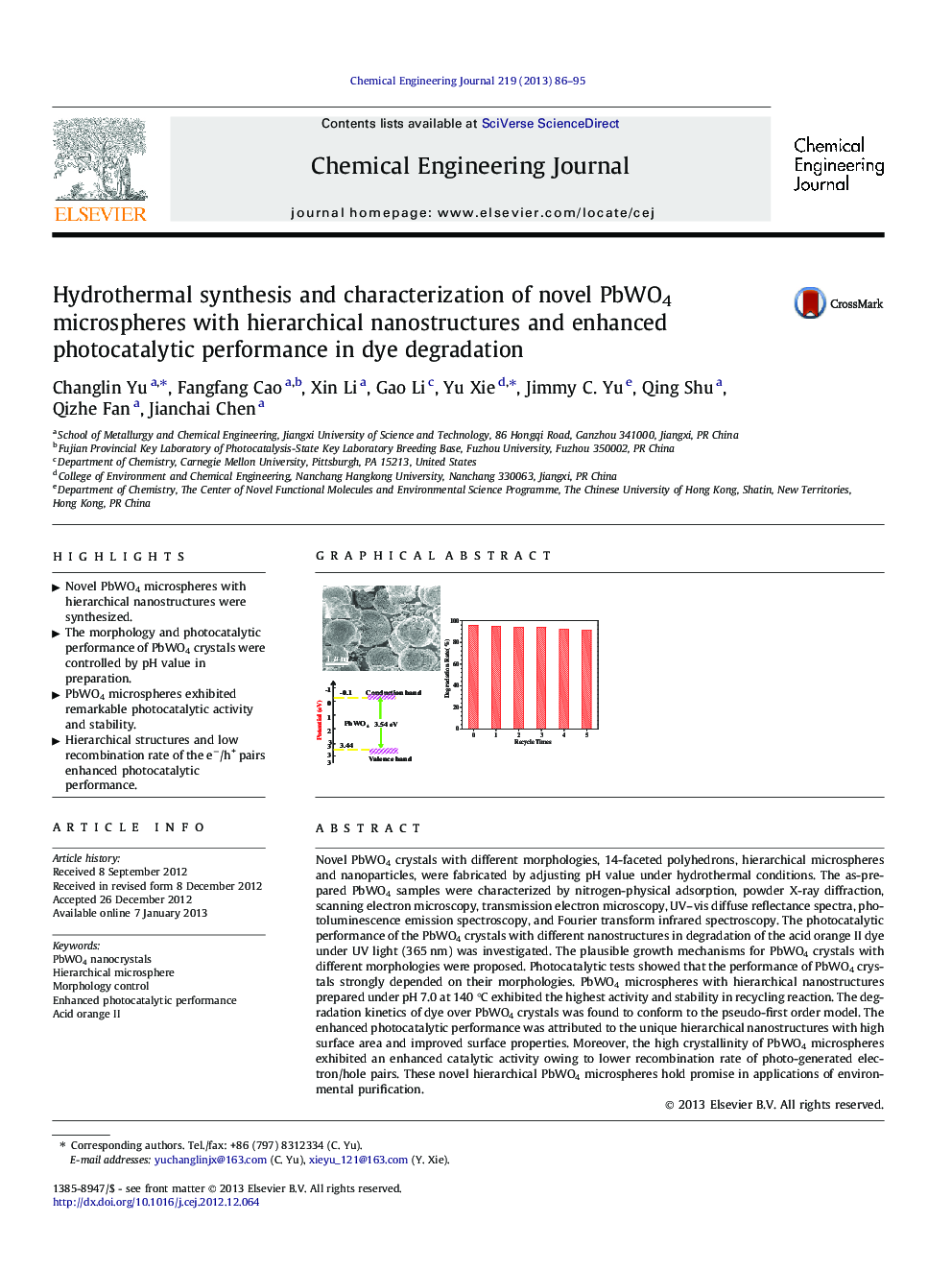| کد مقاله | کد نشریه | سال انتشار | مقاله انگلیسی | نسخه تمام متن |
|---|---|---|---|---|
| 148876 | 456424 | 2013 | 10 صفحه PDF | دانلود رایگان |

Novel PbWO4 crystals with different morphologies, 14-faceted polyhedrons, hierarchical microspheres and nanoparticles, were fabricated by adjusting pH value under hydrothermal conditions. The as-prepared PbWO4 samples were characterized by nitrogen-physical adsorption, powder X-ray diffraction, scanning electron microscopy, transmission electron microscopy, UV–vis diffuse reflectance spectra, photoluminescence emission spectroscopy, and Fourier transform infrared spectroscopy. The photocatalytic performance of the PbWO4 crystals with different nanostructures in degradation of the acid orange II dye under UV light (365 nm) was investigated. The plausible growth mechanisms for PbWO4 crystals with different morphologies were proposed. Photocatalytic tests showed that the performance of PbWO4 crystals strongly depended on their morphologies. PbWO4 microspheres with hierarchical nanostructures prepared under pH 7.0 at 140 °C exhibited the highest activity and stability in recycling reaction. The degradation kinetics of dye over PbWO4 crystals was found to conform to the pseudo-first order model. The enhanced photocatalytic performance was attributed to the unique hierarchical nanostructures with high surface area and improved surface properties. Moreover, the high crystallinity of PbWO4 microspheres exhibited an enhanced catalytic activity owing to lower recombination rate of photo-generated electron/hole pairs. These novel hierarchical PbWO4 microspheres hold promise in applications of environmental purification.
Figure optionsDownload as PowerPoint slideHighlights
► Novel PbWO4 microspheres with hierarchical nanostructures were synthesized.
► The morphology and photocatalytic performance of PbWO4 crystals were controlled by pH value in preparation.
► PbWO4 microspheres exhibited remarkable photocatalytic activity and stability.
► Hierarchical structures and low recombination rate of the e−/h+ pairs enhanced photocatalytic performance.
Journal: Chemical Engineering Journal - Volume 219, 1 March 2013, Pages 86–95